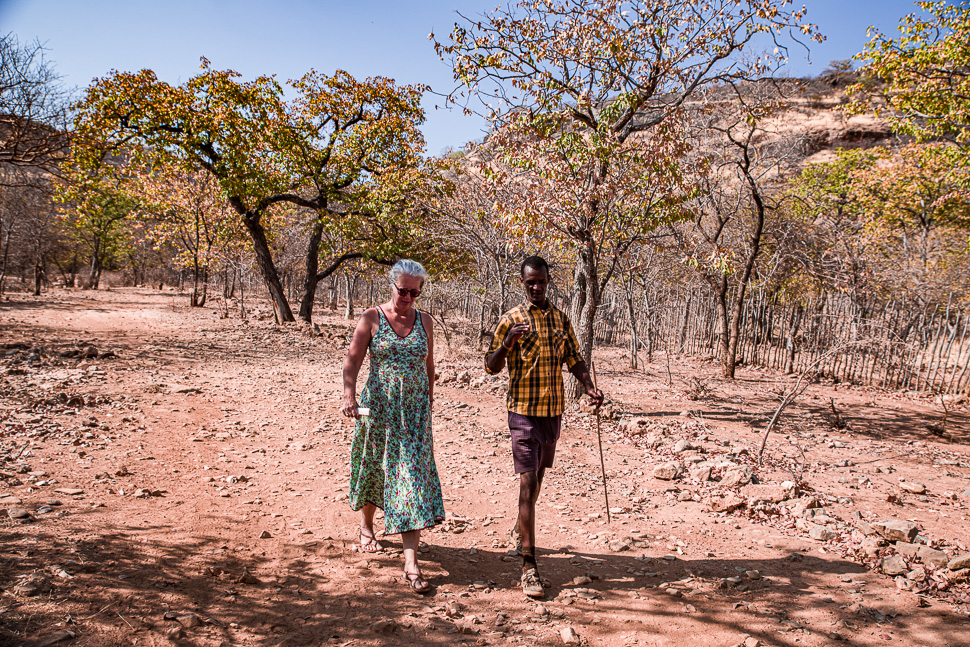
In the north of Namibia we were now clearly in the area where the Himba or OvaHimba, indigenous people with an estimated population of about 50,000 people live. We visited a village north of Opuwo, which also has a campsite next to it. A young man picked us up and explained us about the culture of his people, while walking through the village with us.
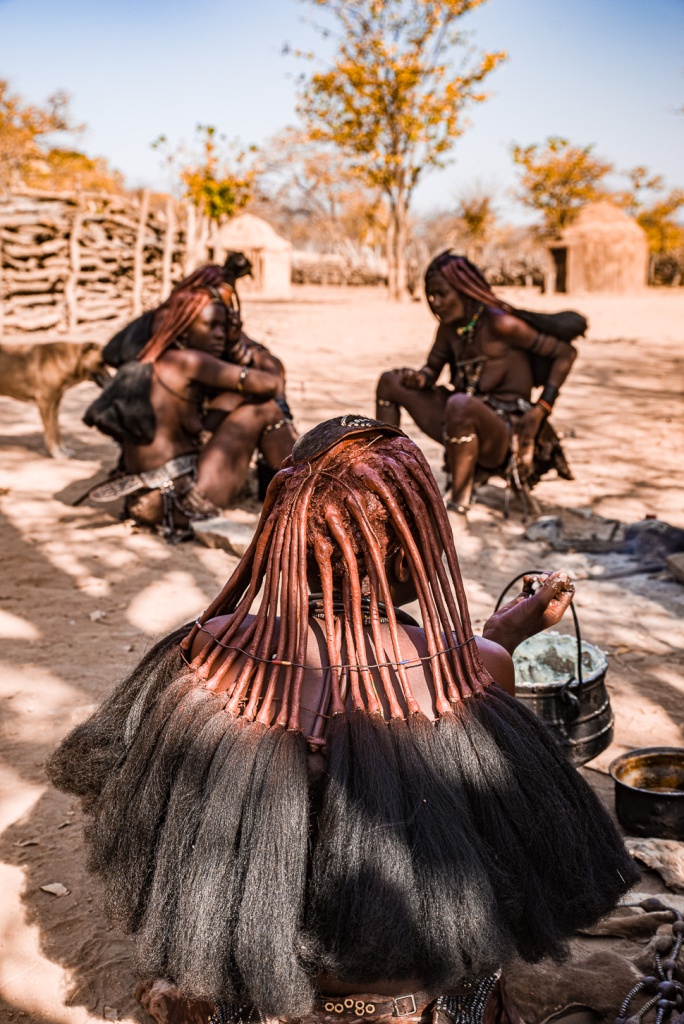
The Himba are a semi-nomadic, pastoralist people and speak OtjiHimba, a variety of Herero, which belongs to the Bantu family. They feel related to the Hereros, even though they couldn’t look more different, especially in the way the women dress, as Hereros are the ones with the long dress and funny headpiece, resembling bullhorns.
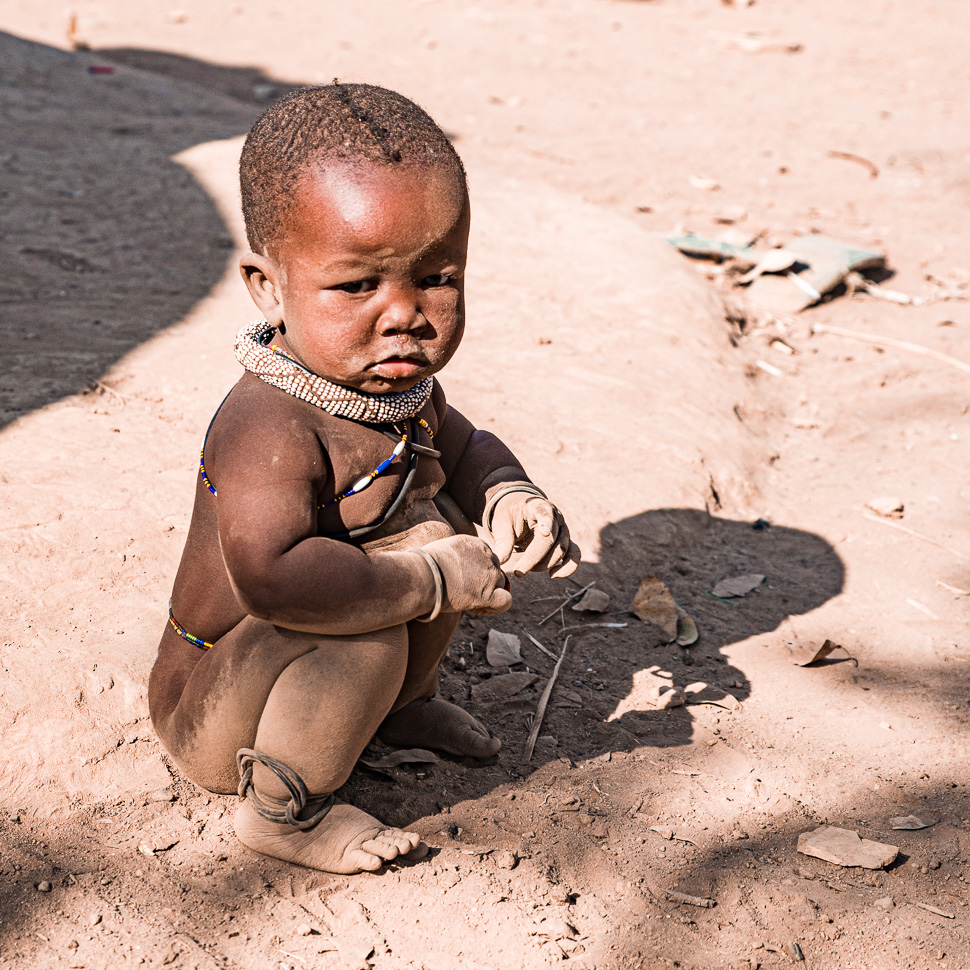
Members of a single extended family live in a small family-village, consisting of a circle of huts that surround a kraal, the enclosure for the livestock, their most important possession. Next to the kraal and the hut of the headman, a sacred fire burns permanently, connecting them to their ancestors.
They have a base village, where crops are cultivated, but move during dry season to where there is access to water. The Himba are the last semi-nomadic people of Namibia.
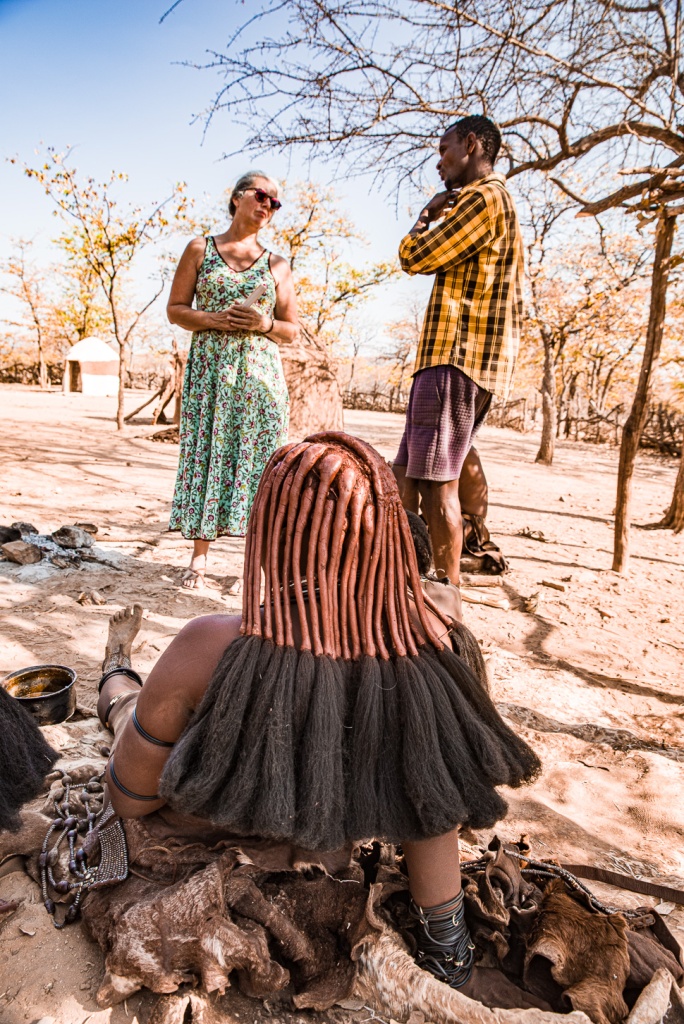
As soon as a girl is married, she wears her hair in plaits, covered in ochre and butterfat. The black extension is actually not their hair but artificial, a modern extension of their tradition, as beauty is very important to them.
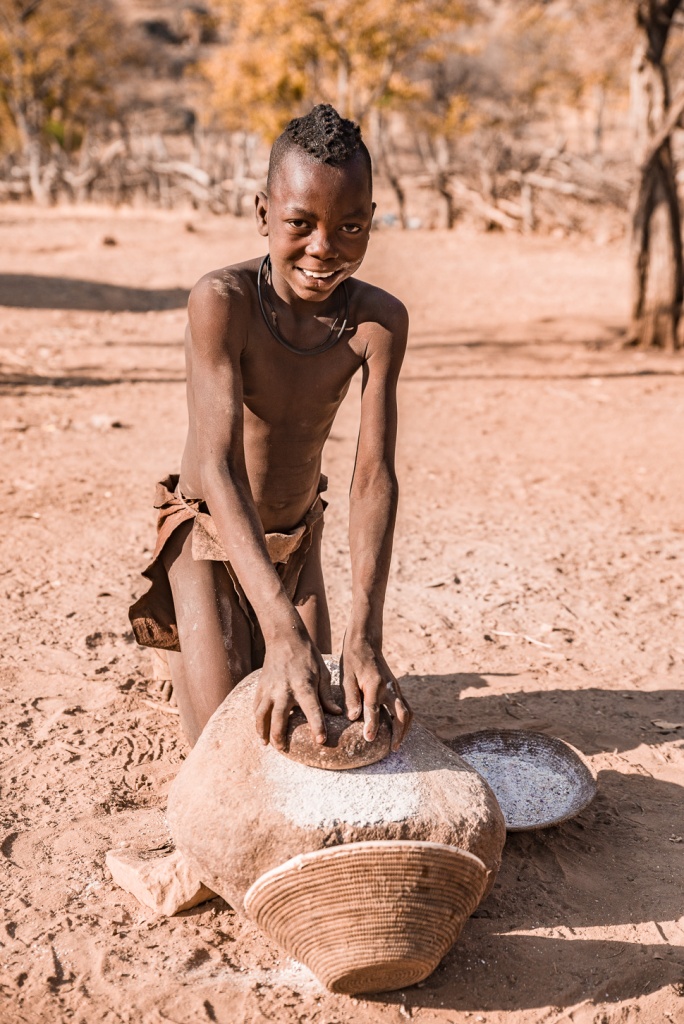
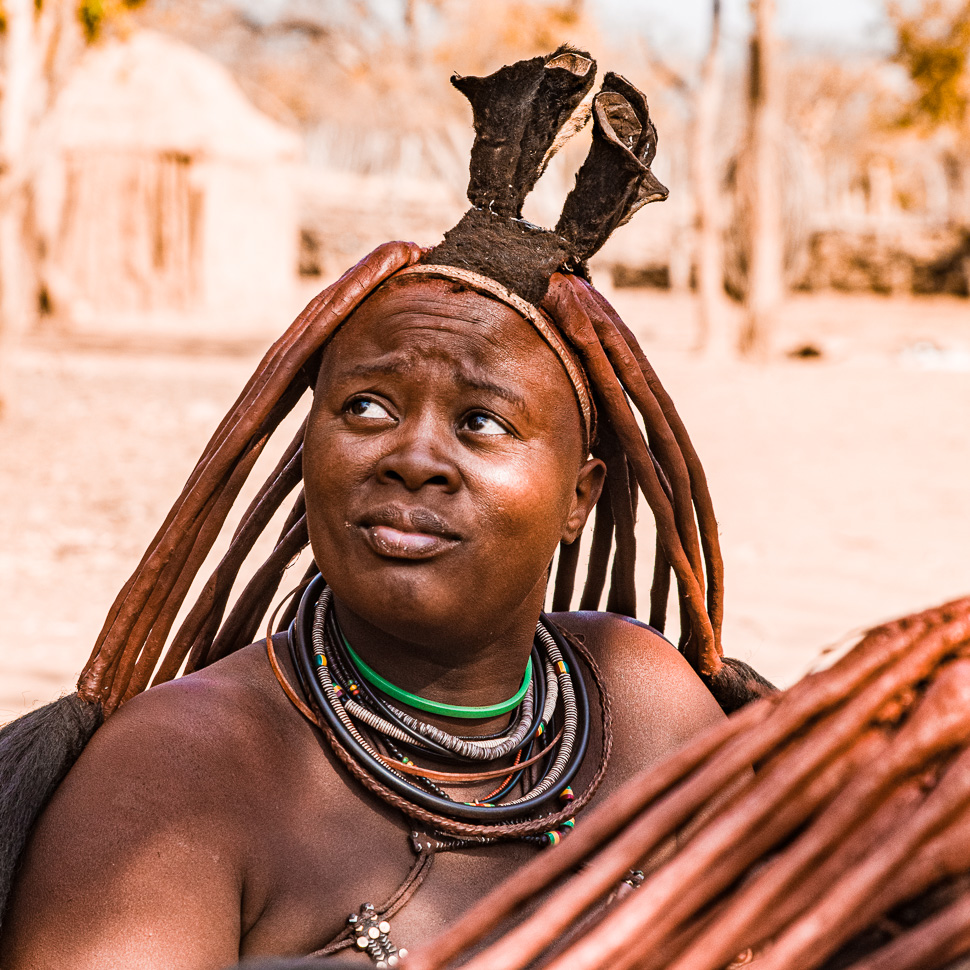
Women who have been married for about a year or have had a child wear an ornate headpiece called the Erembe, sculptured from sheepskin. The elaborate one is for festivities, a simple flat one for every day to carry buckets or other heavy things on your head.
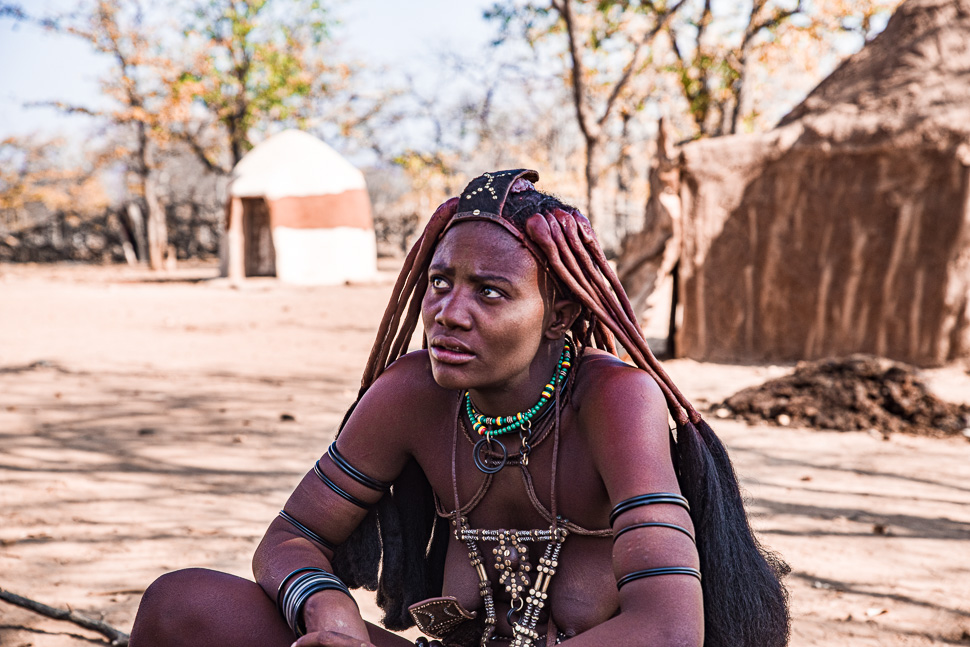
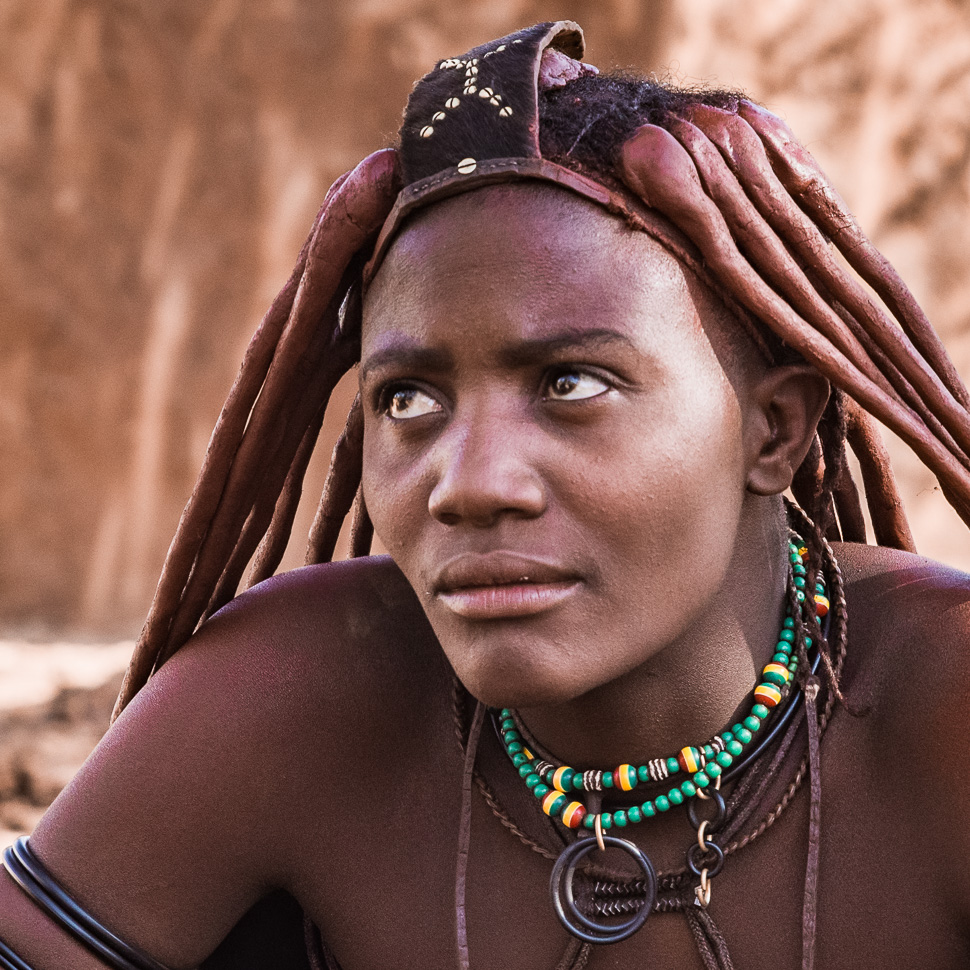
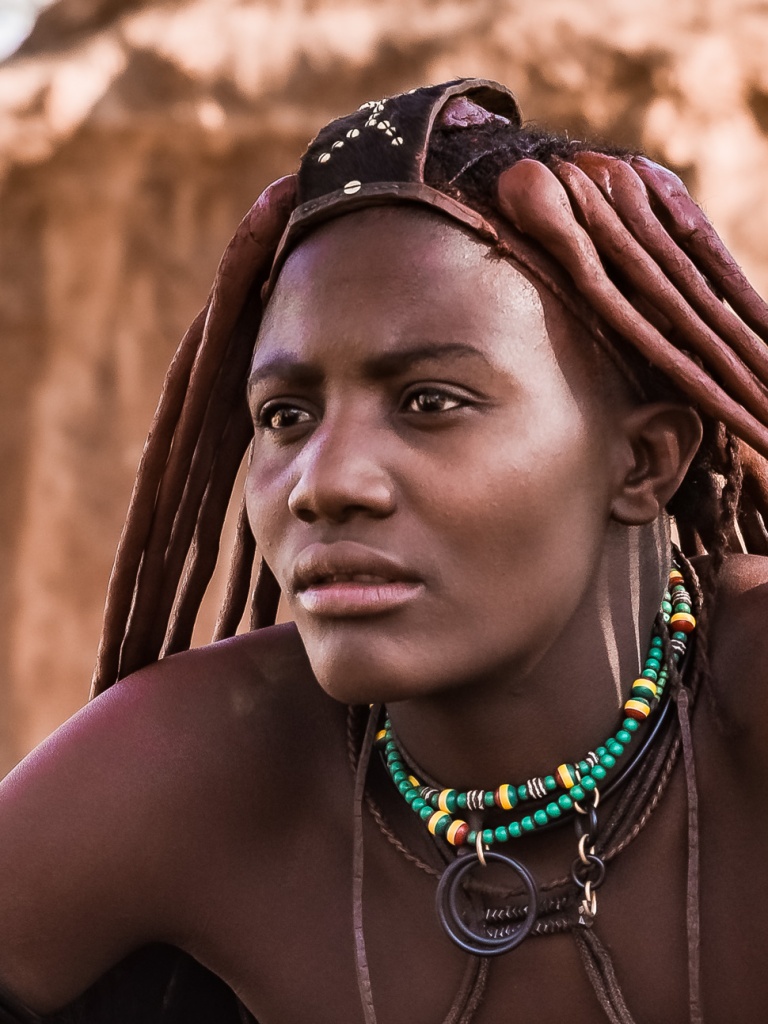
Women and girls do more labor-intensive work than men and boys do, such as carrying water to the village, plastering the mopane wood homes with a traditional mixture of red clay soil and cow manure, collecting firewood, producing soured milk, cooking and serving meals, looking after the children and making handicrafts, clothing and jewellery.
The men’s main tasks are tending to the animals, herding (where the men will often be away from the family home for extended periods), animal slaughtering, construction, and holding council with village tribal chiefs.
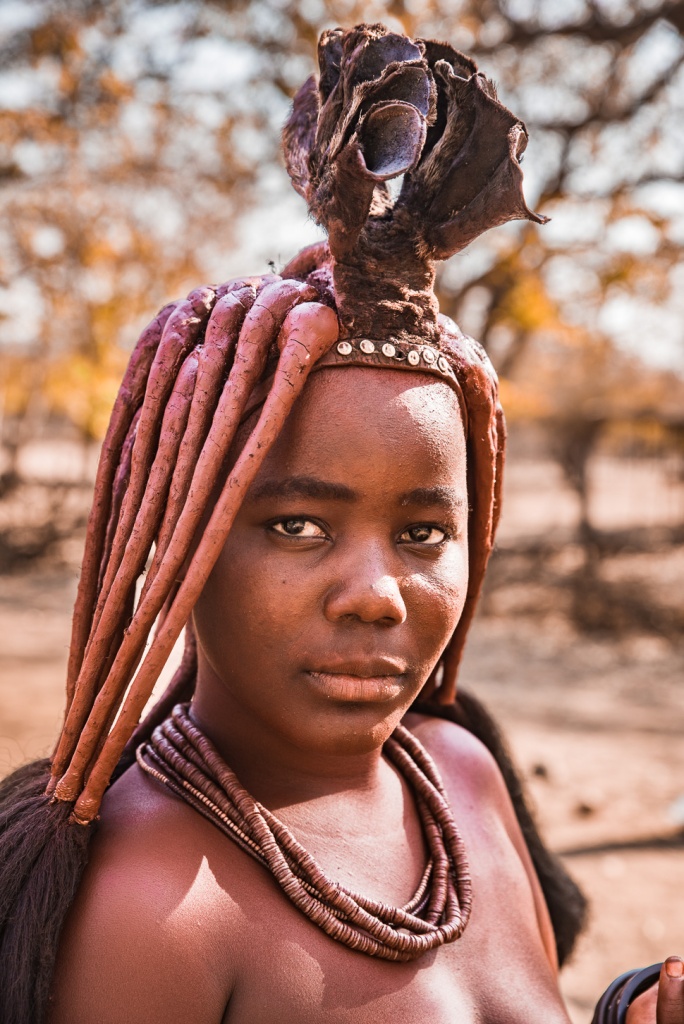
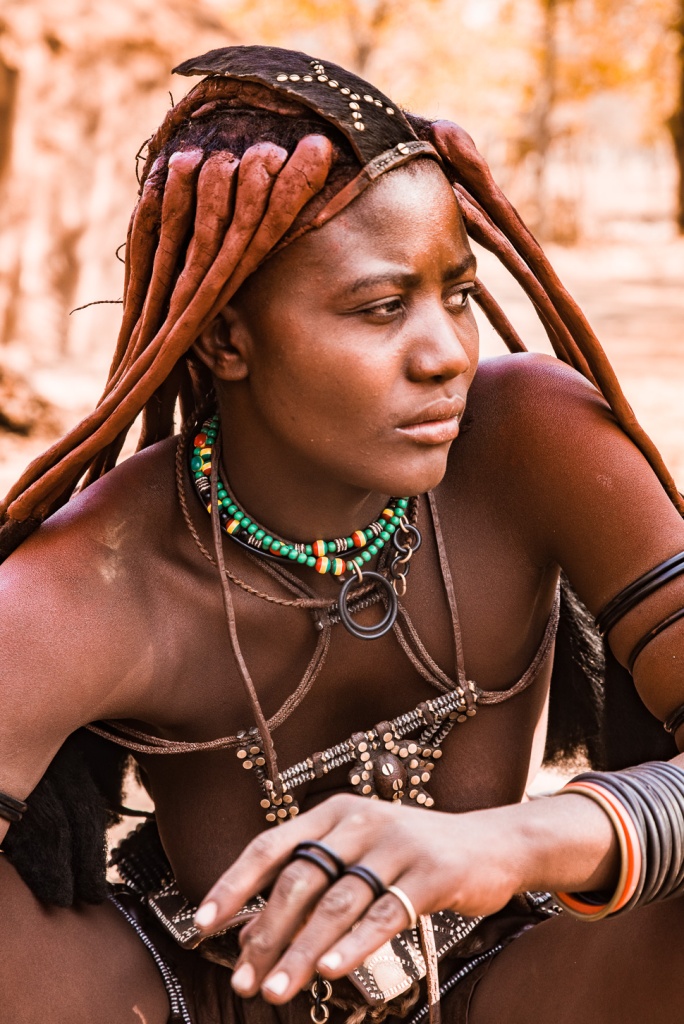
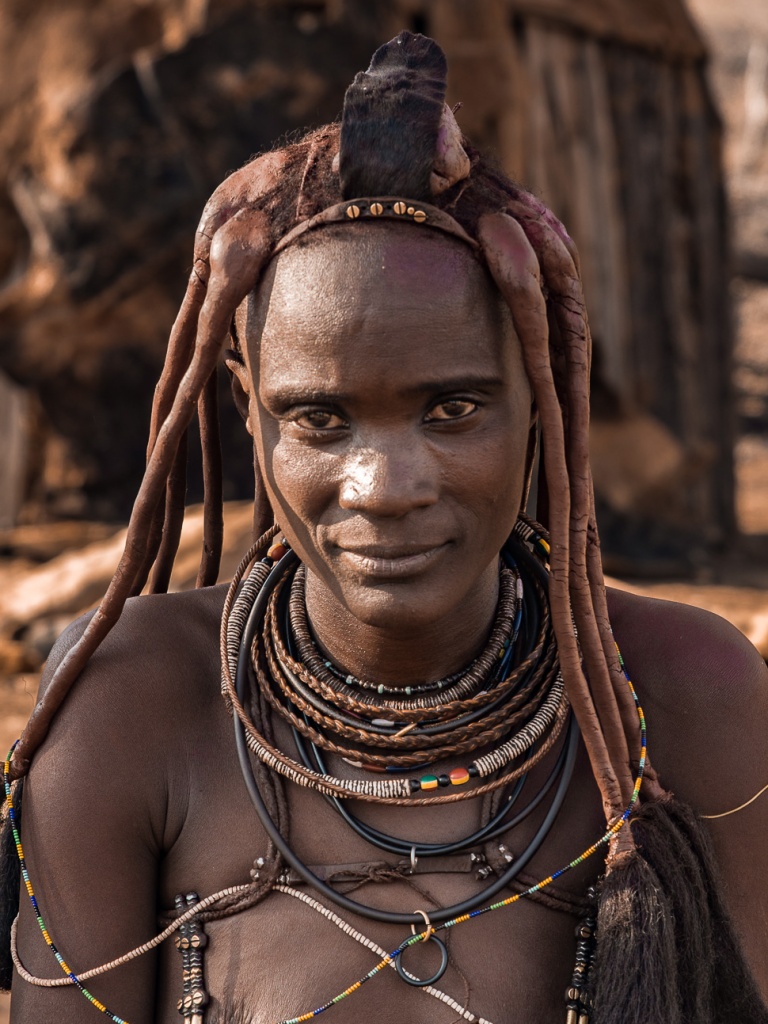
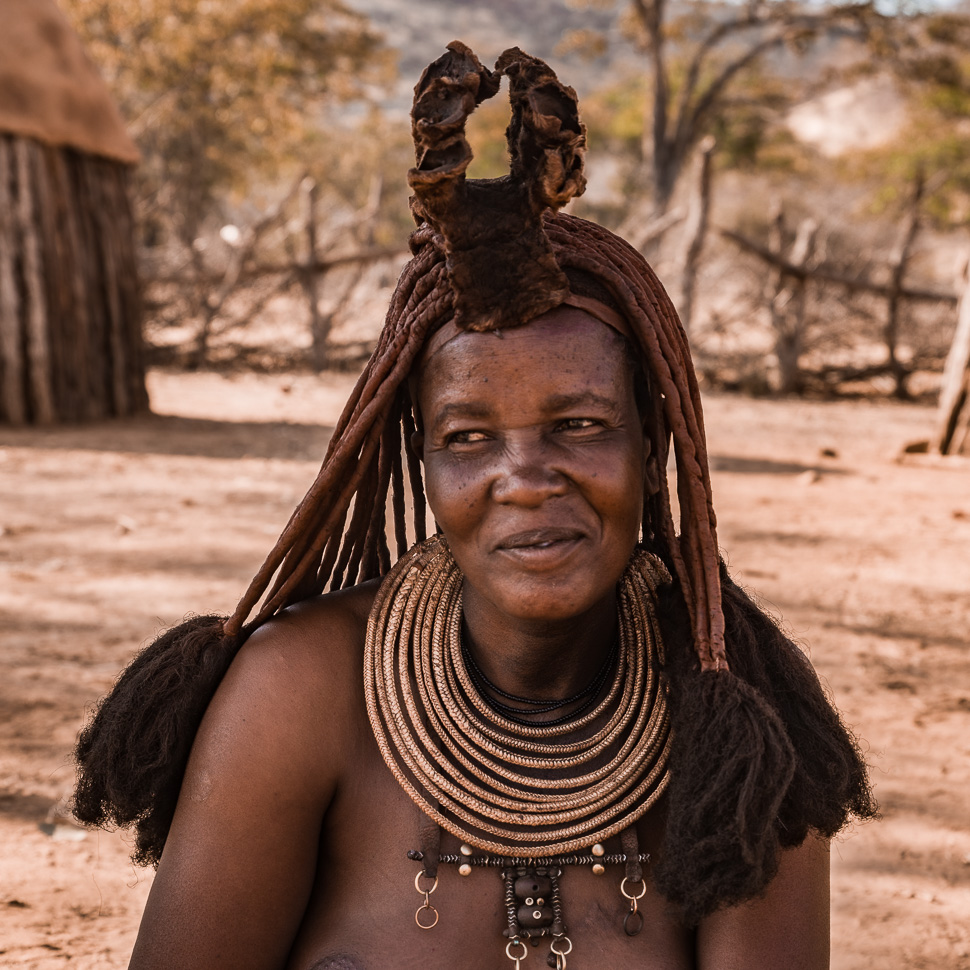
One of the stranger practices of their culture is the removing of the 4 front teeth in the lower jaw. We haven’t yet found out the meaning behind this practice.
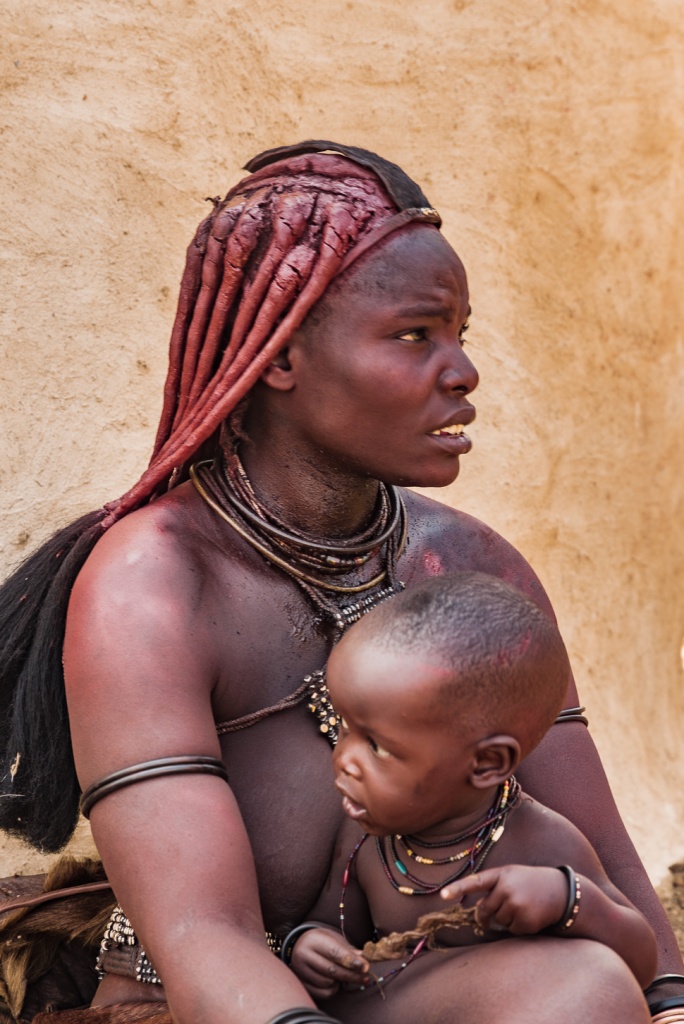
The Himba are polygamous, with a man being husband to two or more wives at the same time. They also practice early arranged marriages. Young Himba girls are married to male partners chosen by their fathers. This happens from the onset of puberty, which may mean that girls aged 10 or below are married off. This practice is illegal in Namibia, but it is nevertheless widespread. Just like the girls, the young men have no say in when and whom they will marry.
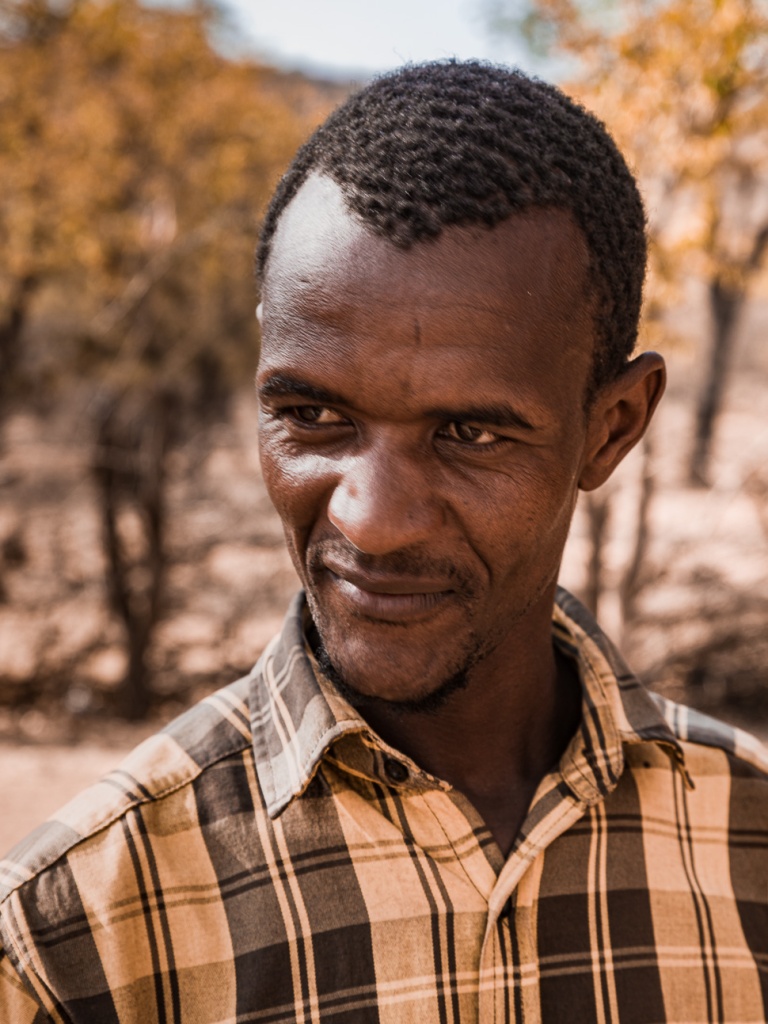
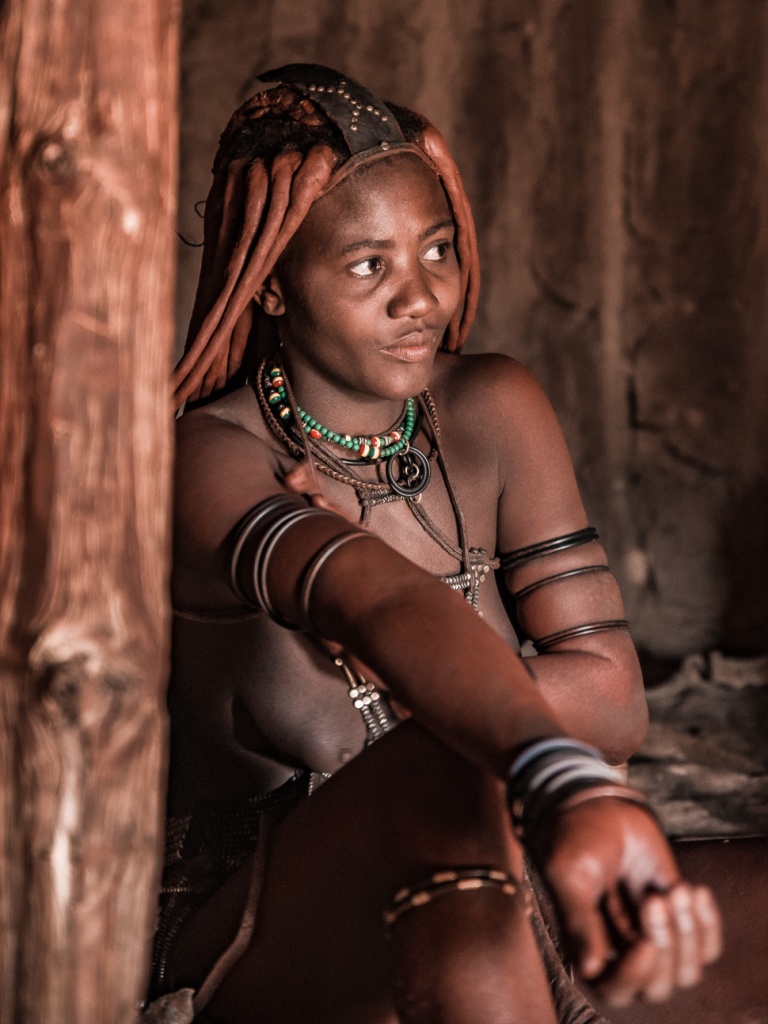
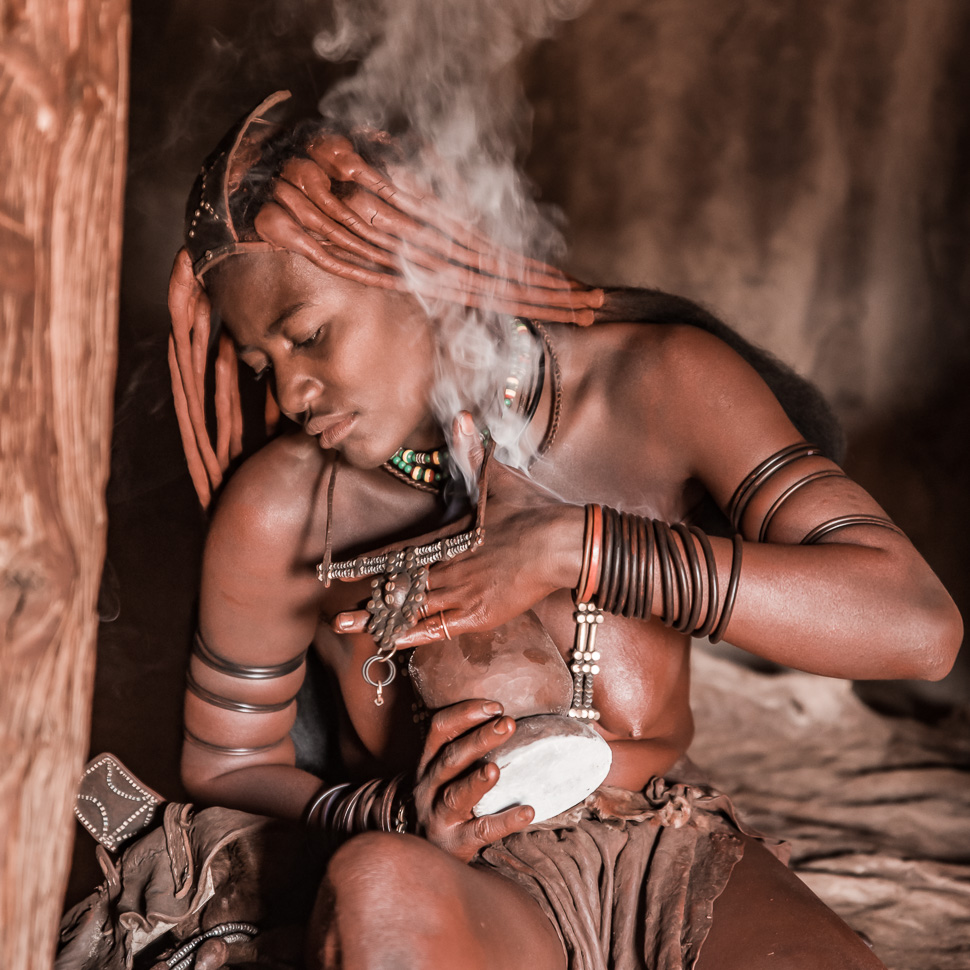
The smoke from burning aromatic herbs and resins, is used for body cleansing, as deodorant and fragrant.
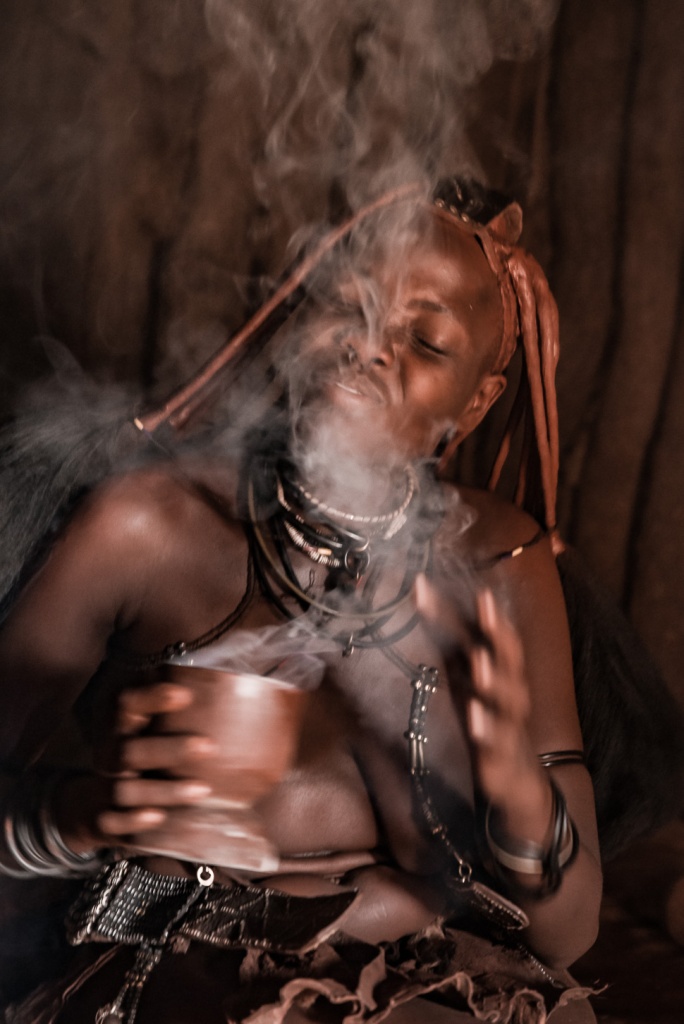
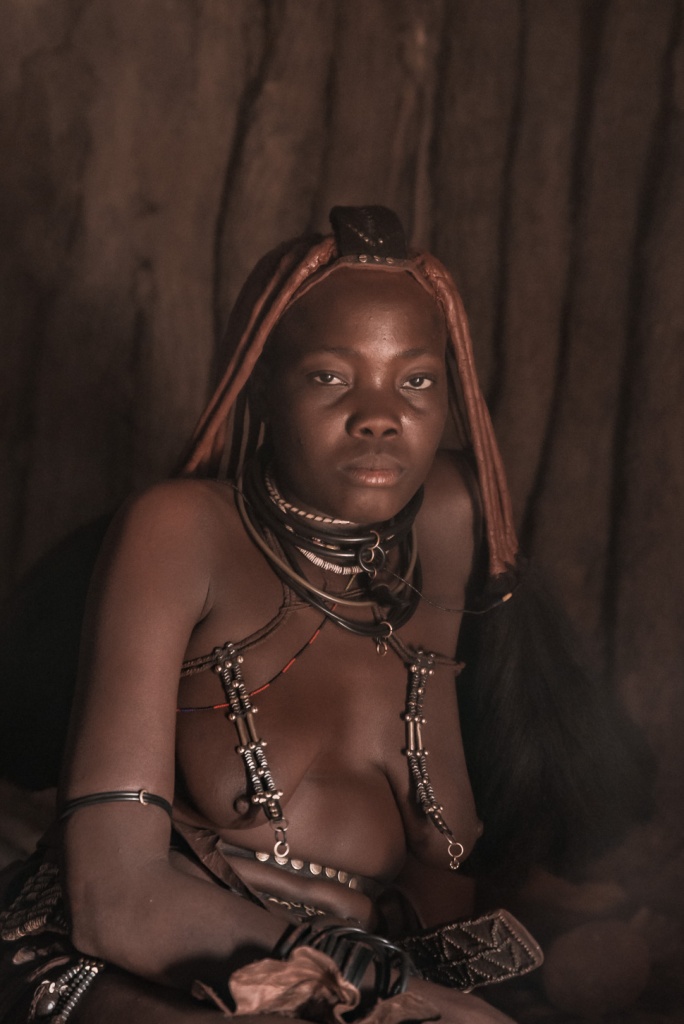
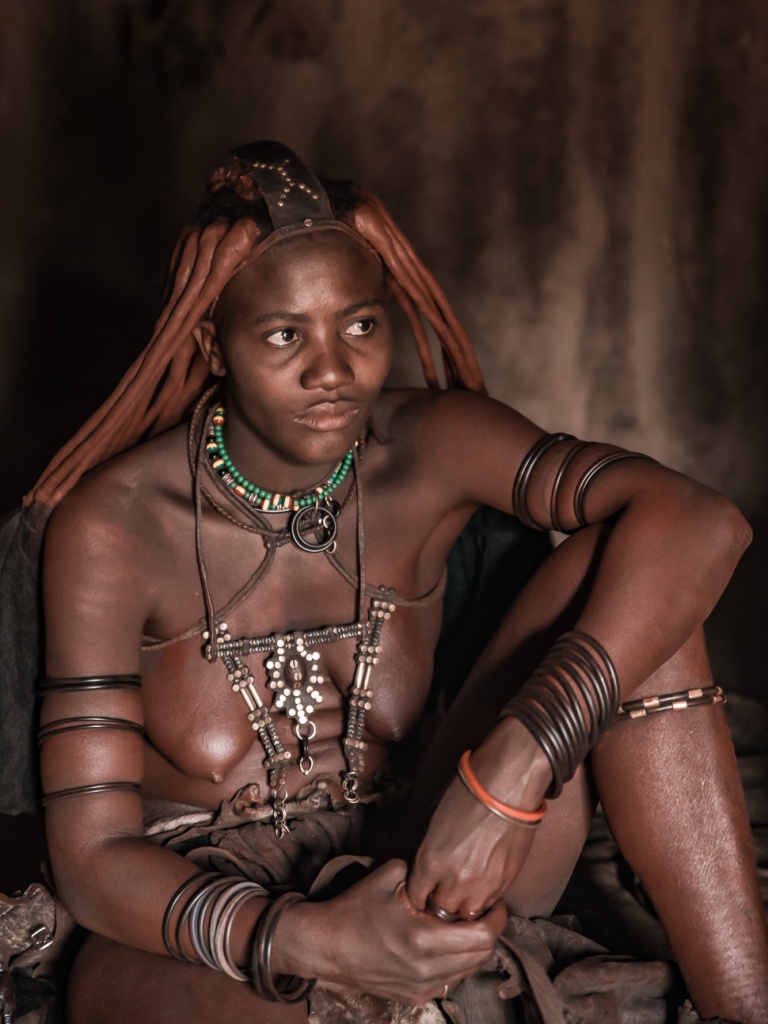
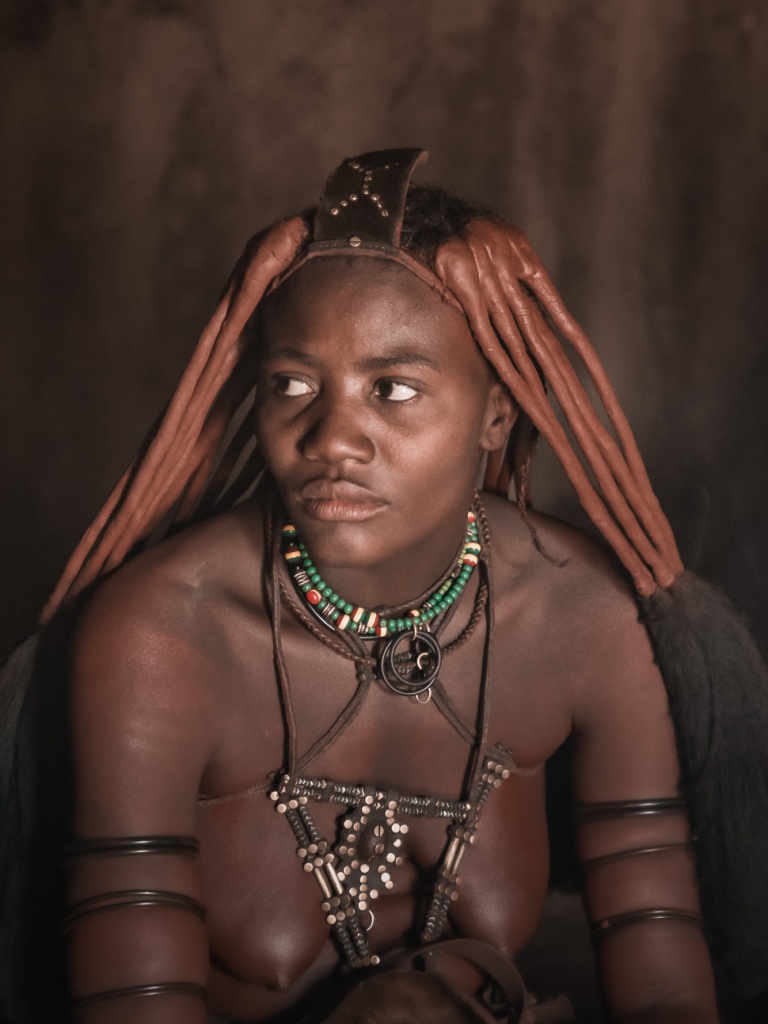
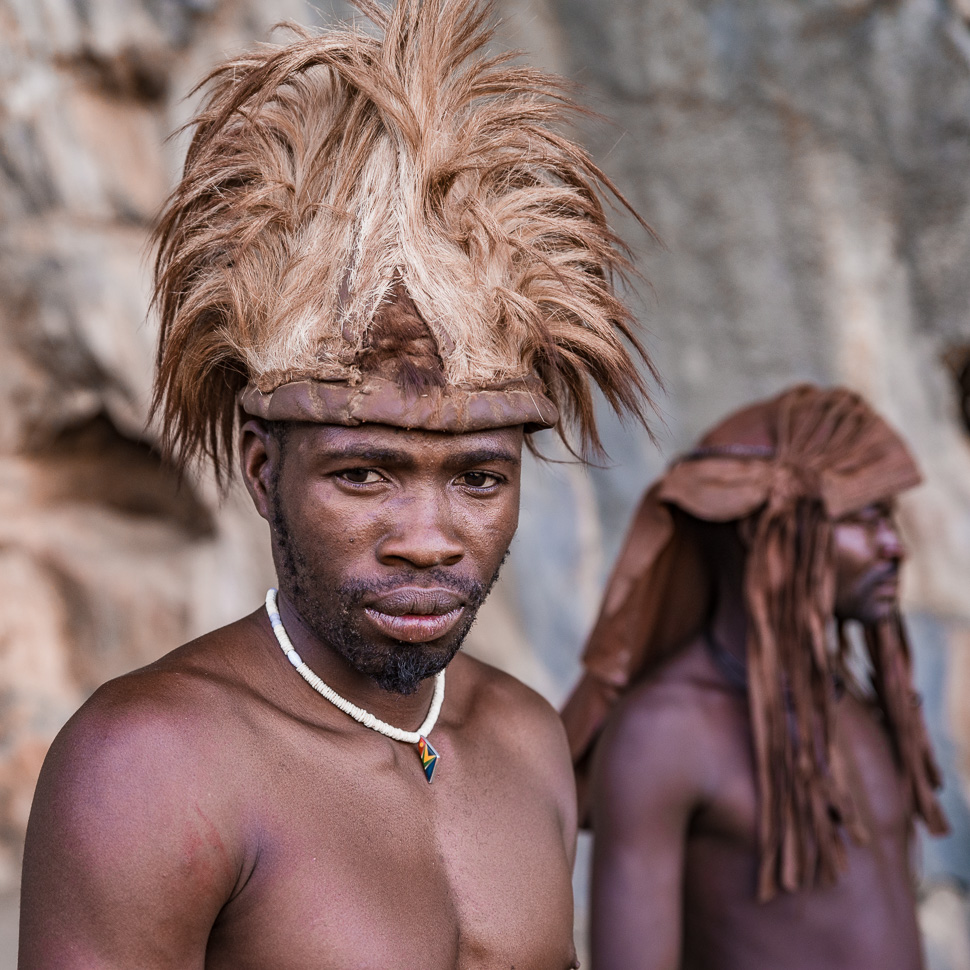
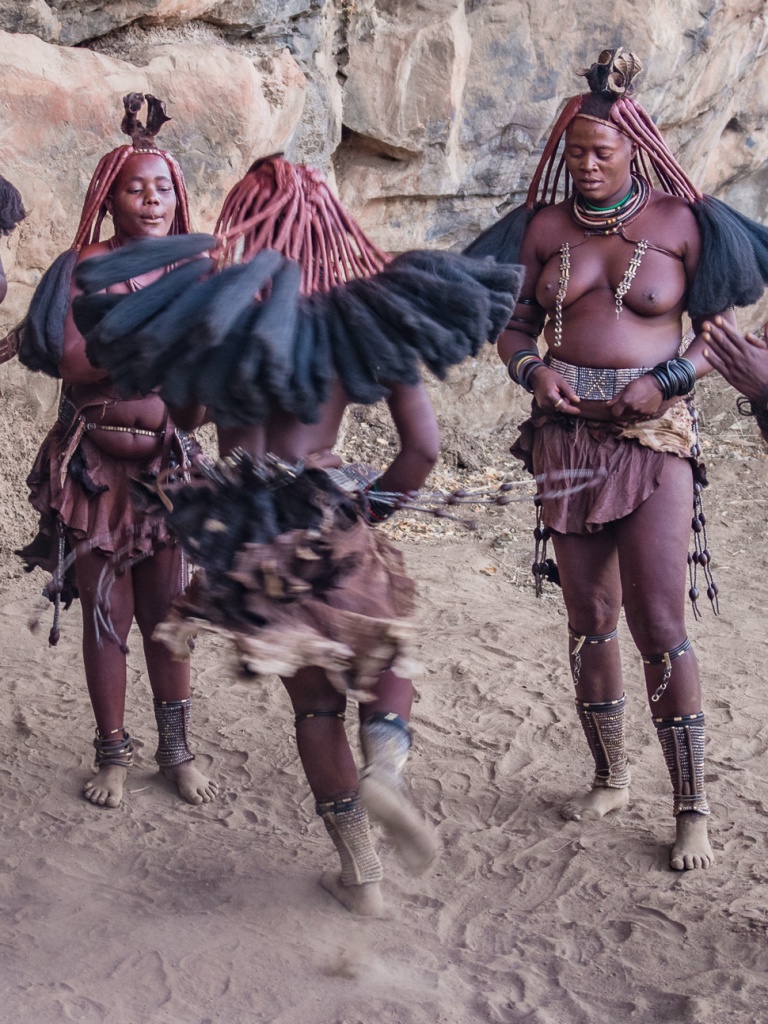
After we had visited the village, they went with us to our campsite, where a cave is used for celebrations. They showed us some of their dancing, accompanied by clapping and shouting.
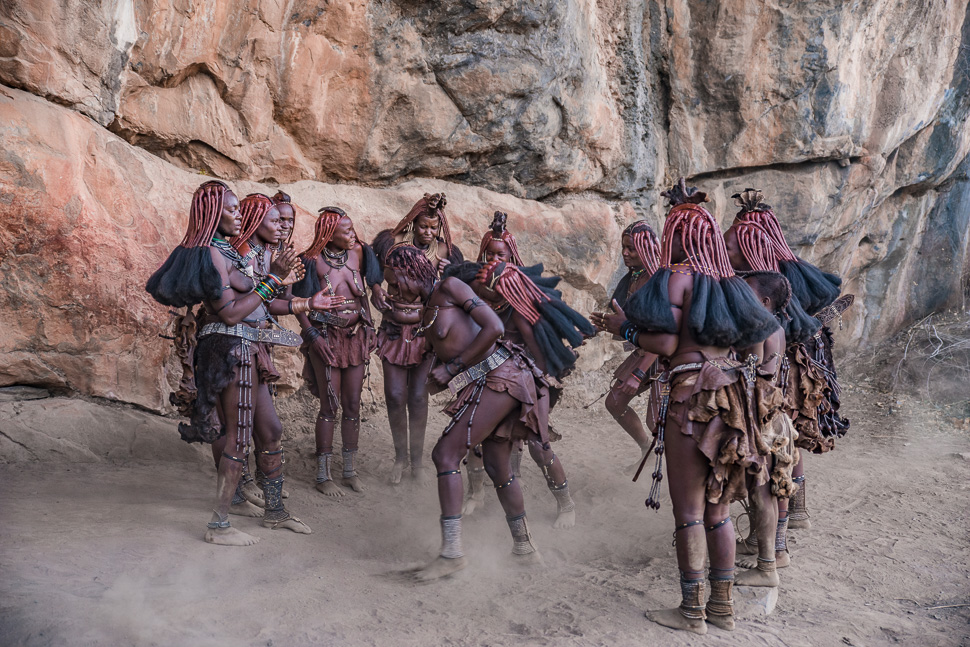
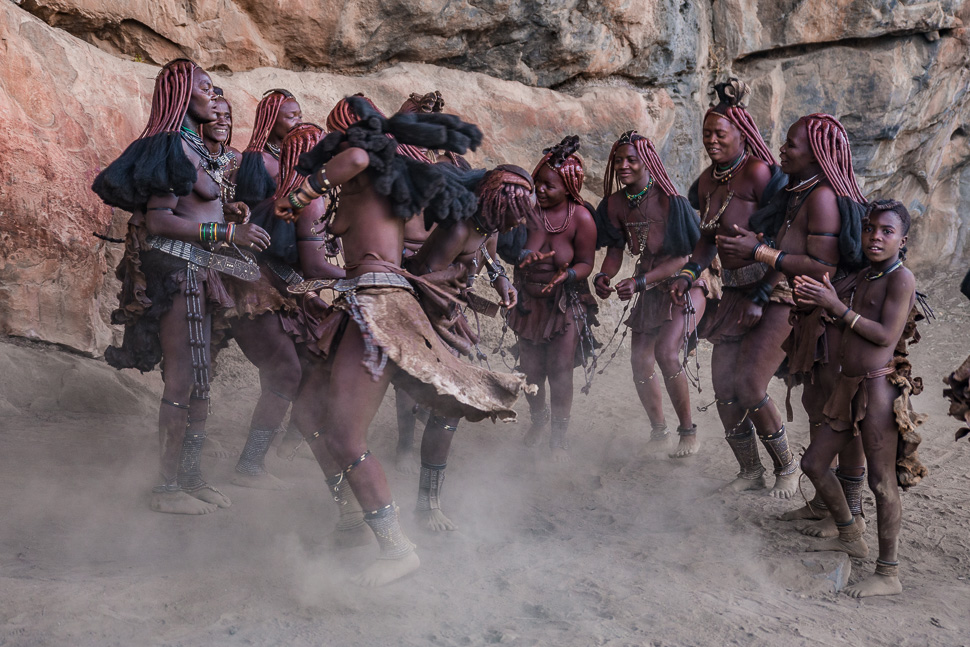
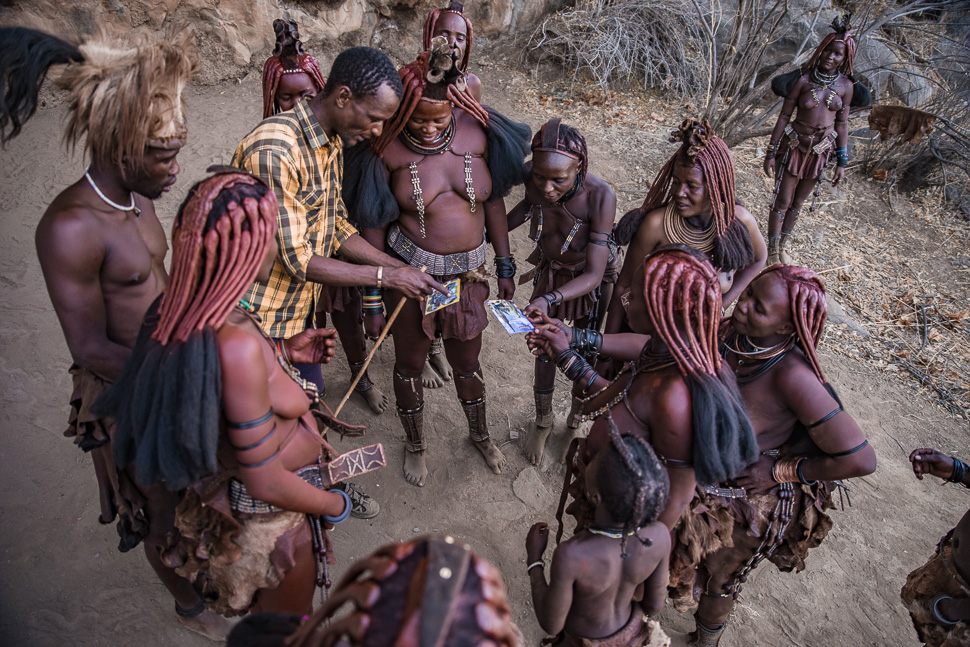
At the end, we gave them some post cards from Vienna, which they found very fascinating. We also bought some fire wood and spent a night at the campsite, before we continued to Epupa the next day.
